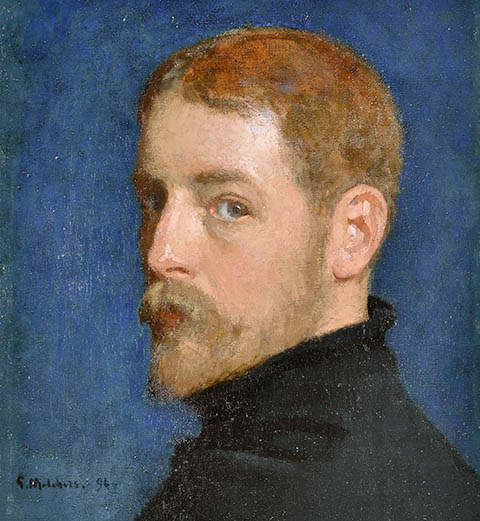
The name Gari Melchers once held true star power. At the pinnacle of his career, Melchers occupied studios in Paris, Holland and New York, was represented in museums at home and abroad, and was a critical and commercial success. He was exceptionally versatile in his subject matter, being associated with Dutch peasant life, portraiture, the mother and child theme, landscapes, the nude, still life and mural painting. His stylistic approach was equally eclectic, ranging from the academic realism of his early years to symbolism and the impressionism that typified his late works. Surprisingly, for a time, he slipped from prominence as his painting fell out of step with prevailing tastes. Today, thanks to the power and clarity of his art, he is being recognized once again as an American master and a leading representative of the rich flowering of painting in the United States around 1900.
Early Life and Training
Gari Melchers was born on August 11, 1860. His father, Julius Melchers, who participated in the failed German revolution of 1848, was among the thousands of German émigrés who fled their homeland to settle in the United States. He named his eldest son Julius Garibaldi in tribute to the Italian patriot. Melchers eventually settled his family in Detroit, Michigan, in the early 1850s. The elder Melchers was a classically-trained sculptor –a pupil of Carpeaux in Paris – who would be remembered for his church furnishings and cigar-store Indians. Young Gari, as he was called, received his first instruction from Julius, a “stern and exacting master of the old school,” and it is reasonable to assume that some of Gari Melchers’ own painstaking method was acquired through him.
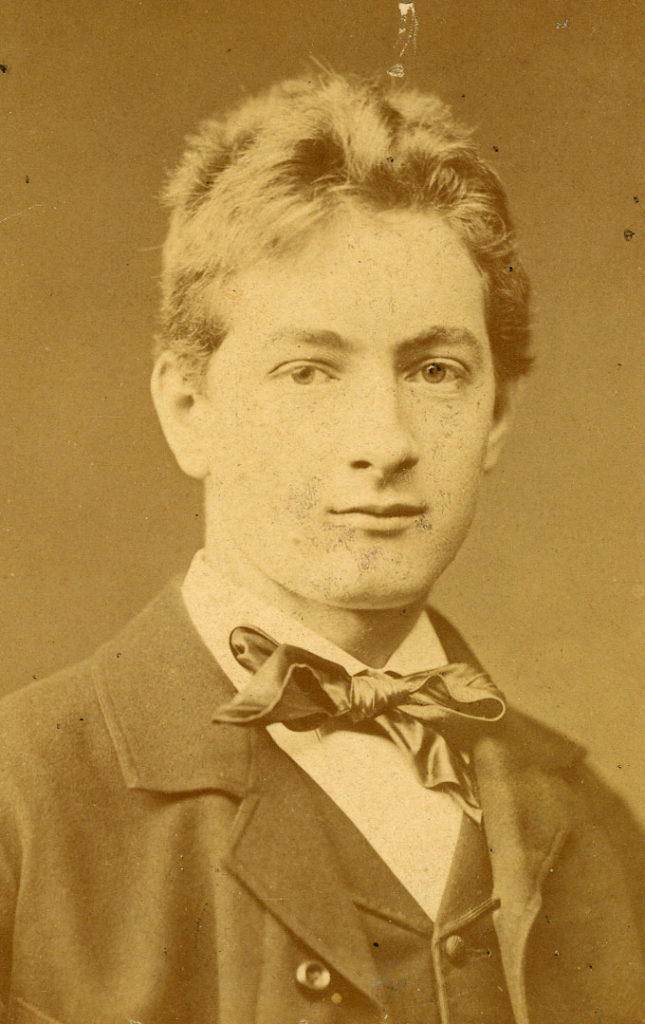
As the boy was only 17, his parents elected to send him to Germany for training, which was a more disciplined environment than the great art capital of Paris with its freewheeling lifestyle. Melchers enrolled in the Royal Academy of Art in Dusseldorf to study figure painting. The conservative curriculum emphasized well-modeled form, hard-edged realism and the finish of the old masters. It espoused old-fashioned subject matter such as history and biblical painting, peasant portraits and scenes of everyday life, all of which would serve to form Melchers’ developing artistic vision.
In 1881, Melchers continued his training in Paris at the Ecole de Beaux-Arts, the state-run academy, and the Académie Julian, an independent atelier, studying under Jules Lefebvre and Gustave Boulanger. For Melchers, who was already advanced, his instruction there provided little in terms of technique, but his exposure to emerging stylistic trends in the art capitol would contribute to his meteoric rise as a leader of American expatriate painting.
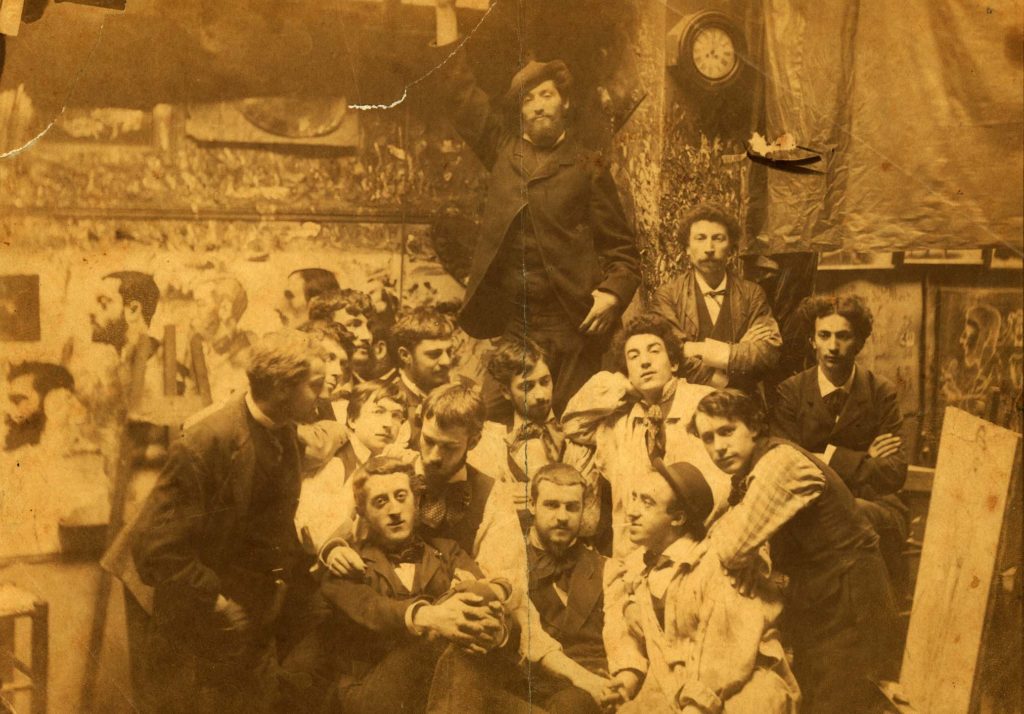
Embracing the Naturalist Movement
The French Naturalist painters, led by Jules Bastien-Lepage (1848-1884), were the darlings de jour of the Paris Salon. Lepage updated mid-19th century realism by depicting unidealized views of country life via the modern practices of open-air painting, vigorous brushwork and brilliant color, combined with an exacting eye for place and personality.
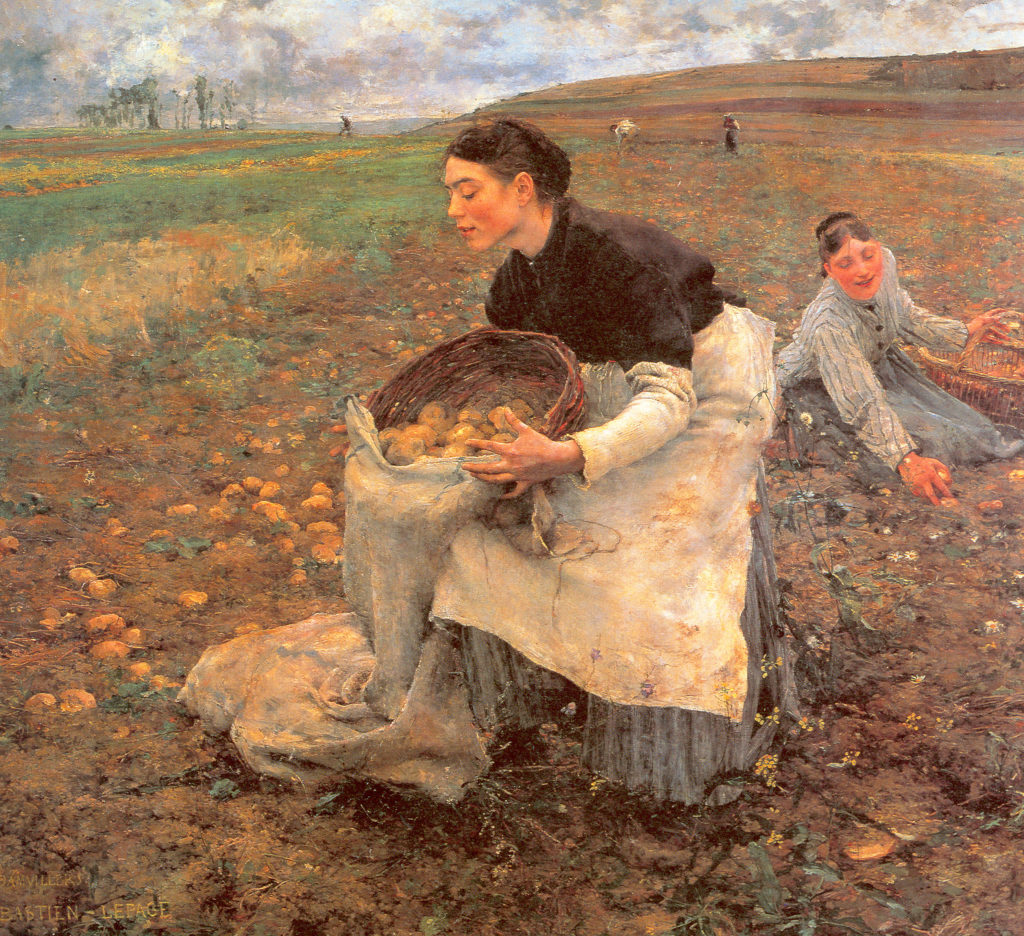
The influence of the naturalists and their predilection for depicting the nobility of the working class quickly spread throughout Europe. Melchers undoubtedly first became aware of naturalism through its German variant in the works of Wilhelm Leibl and Fritz von Uhde. Once in Paris, Melchers fully committed to naturalist ideals and sought out an environment in which to find ample rustic subject matter.
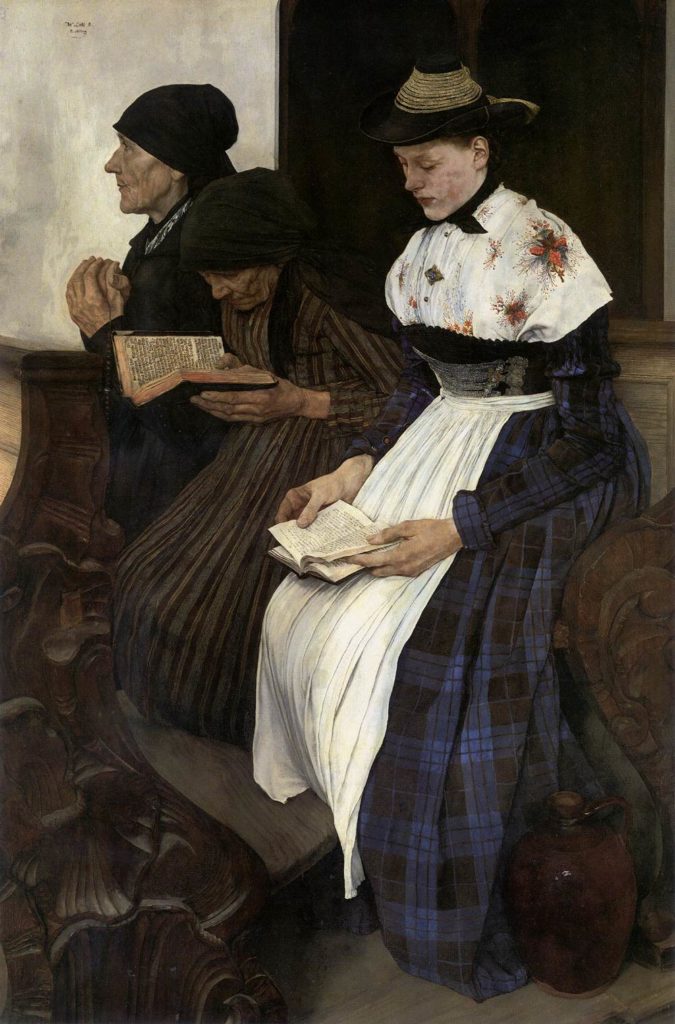
The Holland Interlude
In 1884, Gari Melchers joined another American expatriate, George Hitchcock (1850-1913), at Egmond-aan-Zee, Holland. There the two artists built reputations as chroniclers of the Dutch working class, immersing themselves in the culture for the next two decades in order to ensure that their subjects were the genuine article. For a while the two artists were inspired by a group of contemporary Dutch artists collectively known as the Hague School painters, practitioners of the popular naturalist aesthetic, but in a more somber palette.
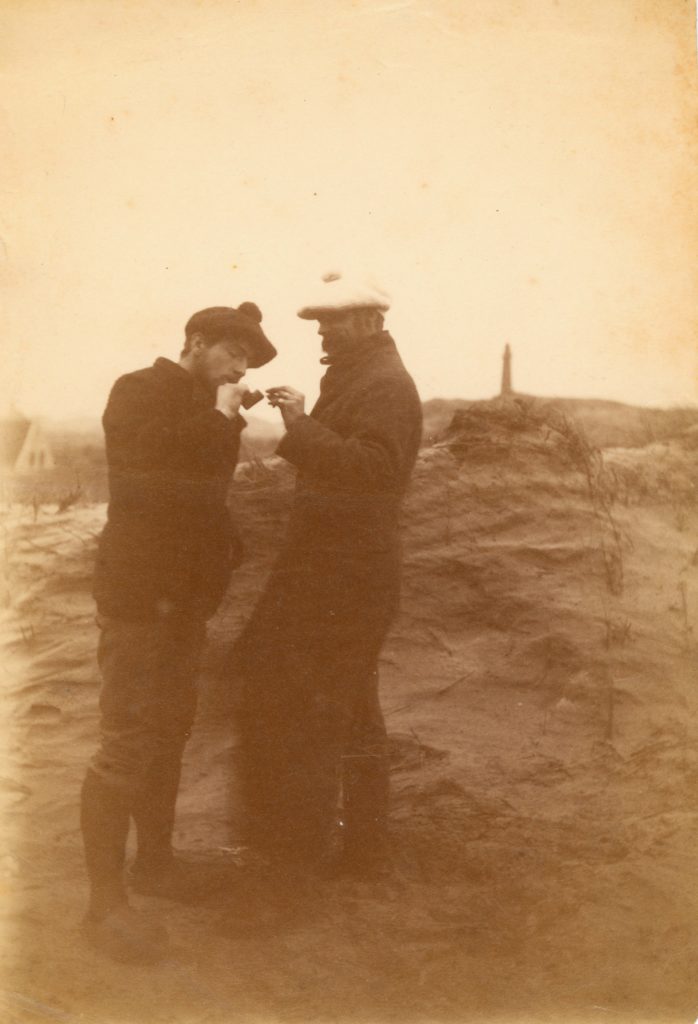
Two years later, Melchers won his first critical praise for a series of multi-figural paintings of Dutch life that were so convincing he was mistaken for a native Dutchman. His landmark painting, The Sermon, 1886, (Smithsonian Museum of American Art) was painted in Egmond Binnen, Holland. It earned him an honorable mention that year at the Paris Salon, an honor unprecedented for an American. It is a monumental canvas portraying a church service in which the central character, a young peasant girl, her head hung low, is either asleep or overcome by grief. Special emphasis was given to descriptive detail and the narrative of an elderly congregant who studies the young woman. This honest characterization of Dutch pietism became one of the day’s most beloved examples of rustic naturalism, conforming to the artistic credo Melchers nailed over the door to his studio, “Waar en Klaar” (Dutch for “true and clear”).

The Communion (Cornell University), The Pilots (The Frye Museum of Art) and The Choirmaster followed, garnering him an international audience, especially in America and Germany, where sentiment ran high for the piety and work ethic of the peasant class. Since that time, no other American has been as synonymous with Dutch imagery as has Gari Melchers.



Demand as a Muralist
Puvis de Chavannes, the great public muralist of France, was an important friend and mentor to the young Melchers. His modernist, ethereal style had a decided influence on Melchers’ evolving mural technique, most evident in Melchers’ allegorical mural cycles The Arts of Peace and The Arts of War that he was commissioned to paint for the 1893 World’s Columbian Exhibition in Chicago and the Library of Congress in 1895. Melchers continued to garner important commissions for major civic building projects in the early 1920s, including decorations for the Missouri State Capitol and the Detroit Public Library.

Spirituality on a Human Plane
About this time Melchers began to experiment with the portrayal of biblical subjects from a contemporary perspective, in emulation of the German painter Fritz von Uhde. It is the human authenticity of Melchers’ Holy Family in The Nativity – their subdued awe – that qualifies it as the finest example of his work in that genre.
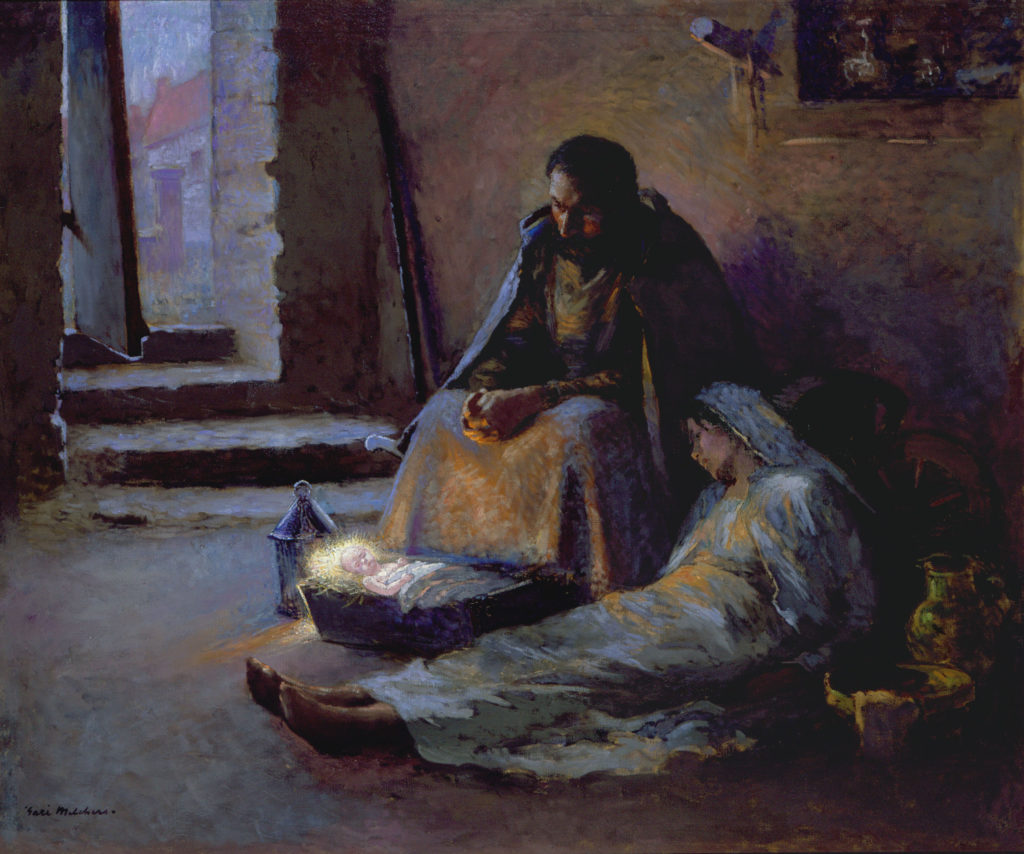
Drawing on his association with Belgian art circles and his friendship with the French Symbolist painter Puvis de Chavannes, Melchers also began to imbue his paintings of everyday folk, particularly mothers and their children, with religious symbolism.
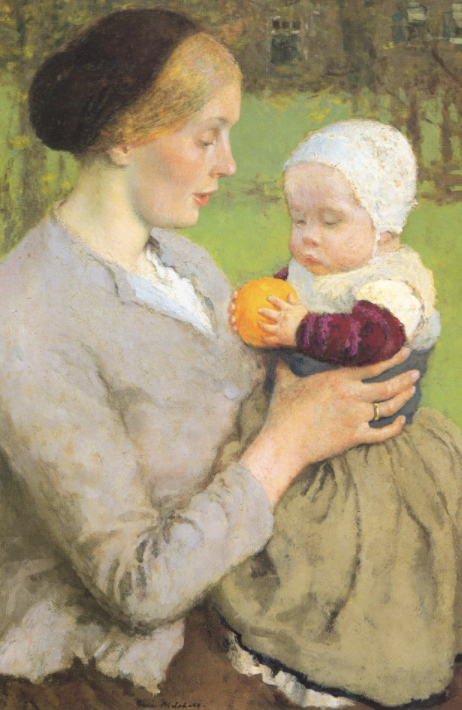

Often he took these pictures a step further, endowing wholesome peasant girls with supernatural haloes that transform them into modern metaphors for the spiritual life.
Portraiture
From the 1890s onward Melchers produced his best portrait work, subjects with names like Vanderbilt, Mellon and Roosevelt ensuring his reputation and earning him his greatest financial reward. His most original pictorial format was anonymous portraiture: paintings whose titles identify the subject’s vocation rather than identity –The Sailor and His Dog; The Fencer; Fencing Master (Detroit Institute of Art) and The Shipbuilder (National Art Collection, Dresden) – and which focus on the formal considerations of the composition –symptomatic of a time when art was elevated for its own sake over celebrity worship.
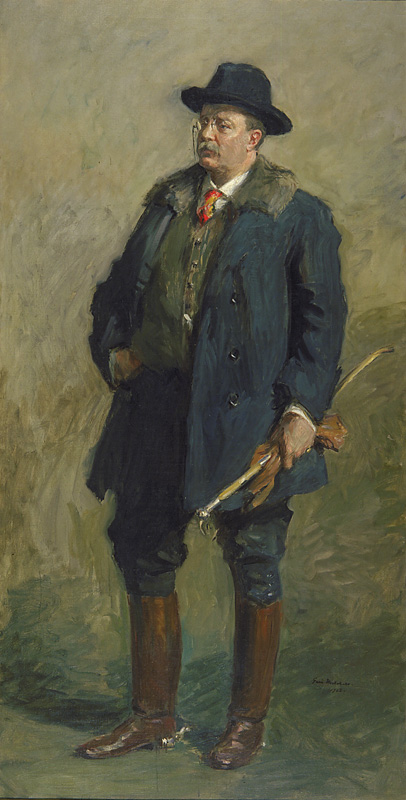
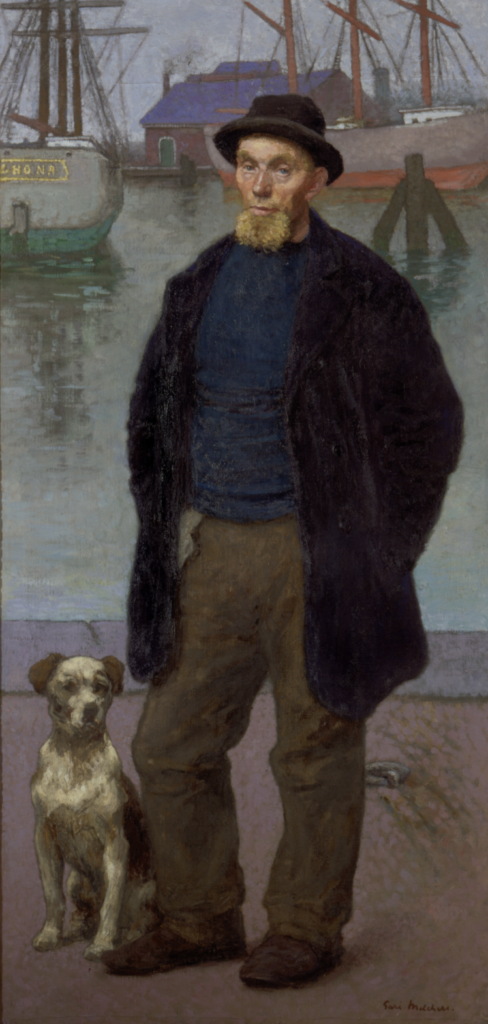
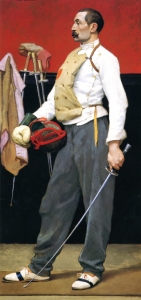
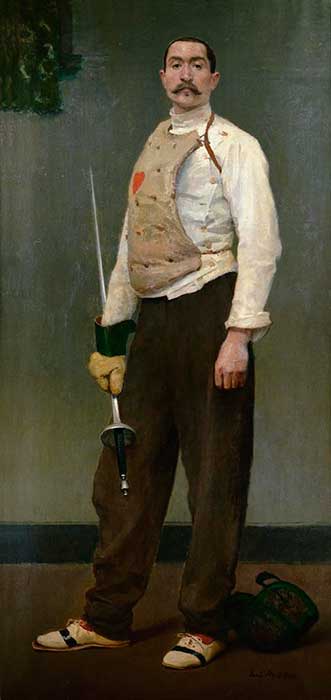

Shift towards a Decorative Aesthetic
In the opening years of the 20th century, Melchers entered a phase of greater decorative consciousness in which he emphasized vibrant color, natural lighting, loose, textural brushwork and pattern. This modified impressionist style provided an ideal vehicle for his new interest in the subject of modern women and their children portrayed in beautiful interiors and gardens – The Winged Victory; The Open Door and The Christening. Interestingly, the pronounced gaiety of his work in this period coincides with his marriage in 1903 to a young American art student, Corinne Mackall.
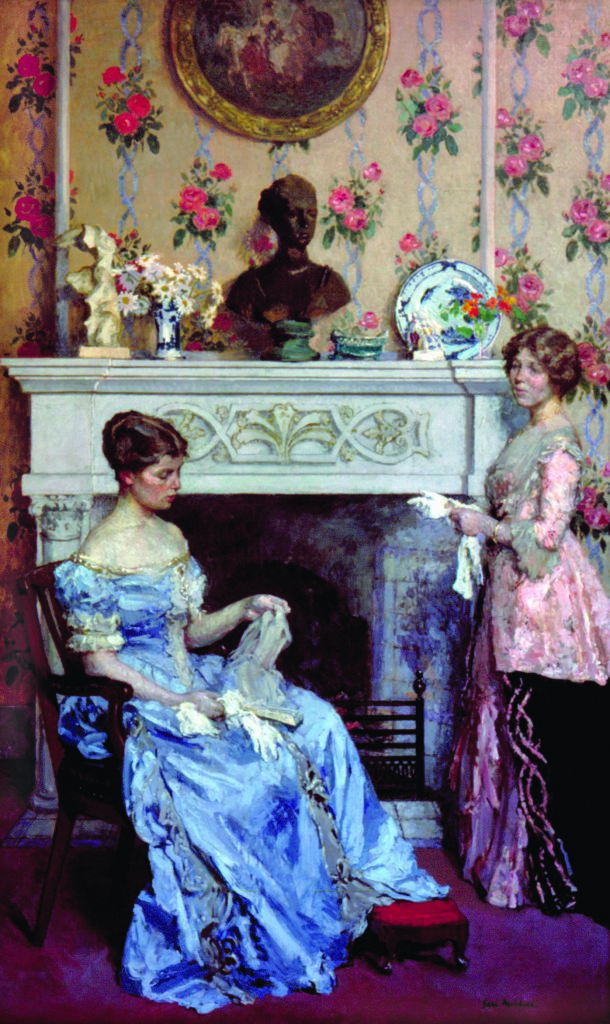
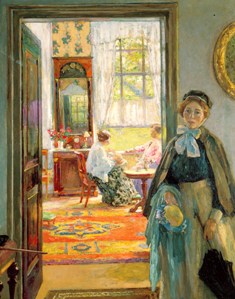

Out-of-doors, Melchers concentrated on recording the poetic effects of light and atmosphere in impressionist-inspired landscapes like In My Garden (Butler Art Institute), The Unpretentious Garden (Telfair Museum of Art); Bryant Park (Twilight), Hudson River and The Wartburg, building on what would become a favorite topic in his later years.

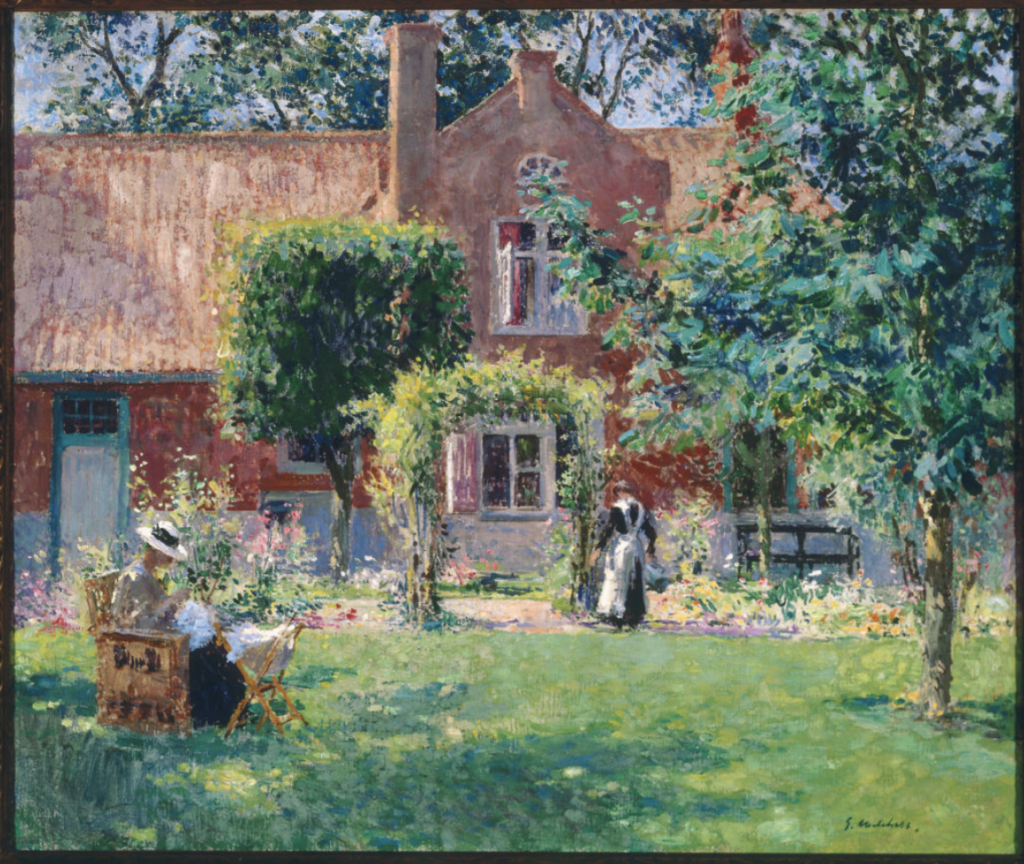


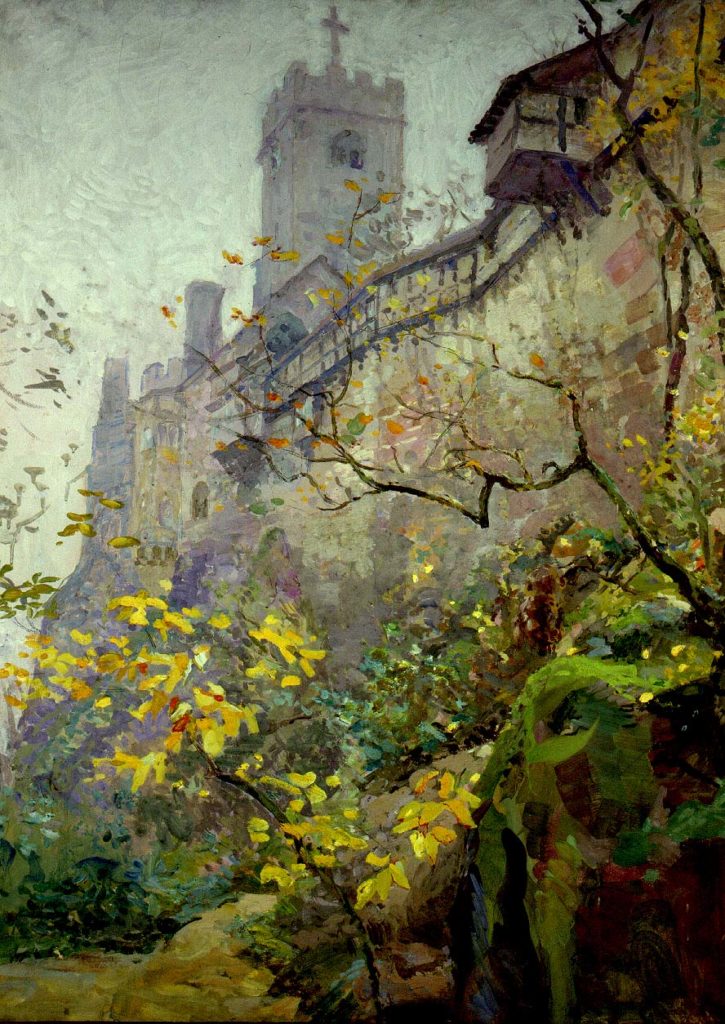
The Weimar Interlude
As an expatriate, Melchers enjoyed his greatest popularity in Germany, where in 1909 he accepted an appointment as Professor of Art at the Grand Ducal Saxony School of Art in Weimar. There he remained until the First World War had all but shut down the school. It was about this time that Melchers began to experiment with the nude as subject matter, doing so on a large and provocative scale with brilliant color accents. Lassistude, No. 1 is an example of what would to be a major preoccupation of the artist until the end of his career. At the same time Melchers accepted an appointment as art agent to the Telfair Museum of Art and Sciences in Savannah, Georgia, where he used his international connections to acquire important works to build their nascent collection.
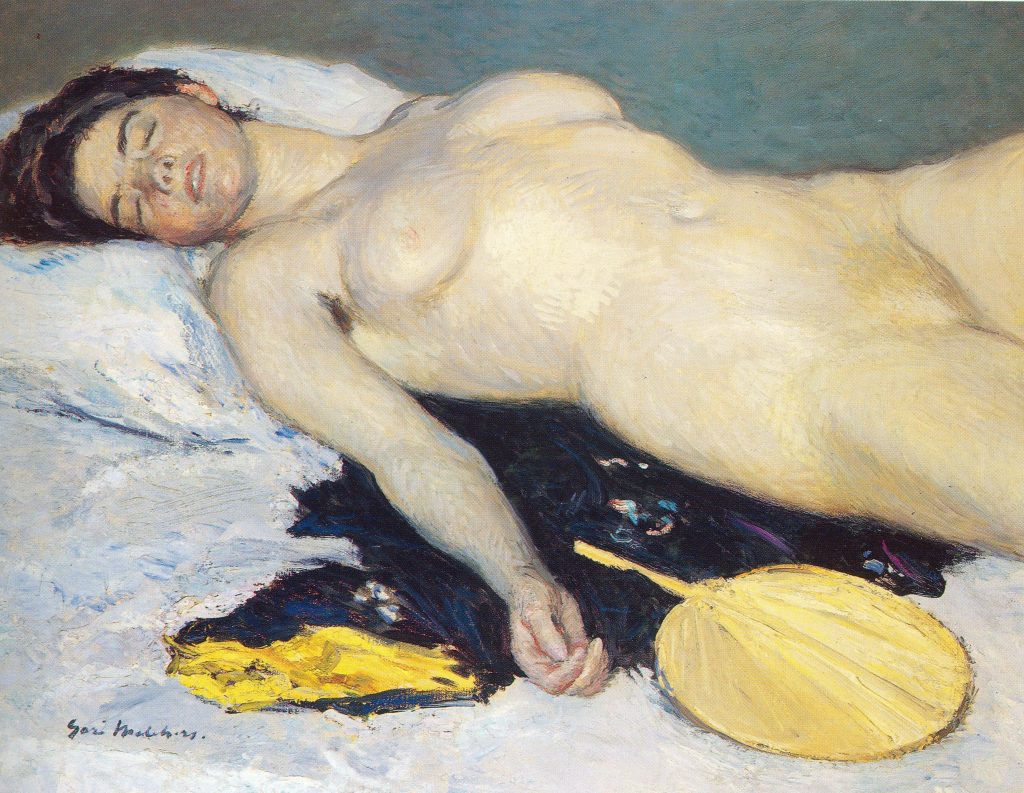
Chronicling the American Scene
When World War I forced Americans expats stateside, Melchers opened a studio at the Beaux-Arts building at Bryant Park in New York City, 80 West 40th Street. There he began the final chapter of his career by assuming leadership and organizational roles within the professional art community there. He was an academician of the National Academy of Design, a member of the American Academy of Arts and Letters, and from 1920 to 1928 president of the New Society of Artists, an exhibiting organization which included such luminaries as Robert Henri, Frederick Frieseke, George Bellows, and the sculptor Paul Manship.
A Virginia Retreat and Final Years
Melchers longed to escape the city for a pastoral retreat much like the one he and his wife had enjoyed in Holland. They found their country getaway at Belmont, an eighteenth-century estate in Falmouth, Virginia, near Fredericksburg. Here Melchers discovered ample inspiration and was happiest painting for the sake of painting itself. He took up his brush to paint the locals and pure and figurative landscapes. The late works are colorful, fresh and spontaneous impressions that share affinities with the work of his peers, fellow American impressionists Childe Hassam, John Twachtman, and Edward Redfield, to name a few. Among the finest examples of this period are A Native of Virginia; The Hunters (Greenville County Museum of Art); Early Spring Landscape; Cottage in Snow; and St. George’s Church).
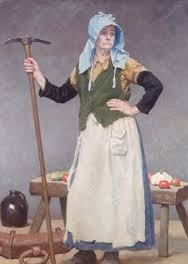
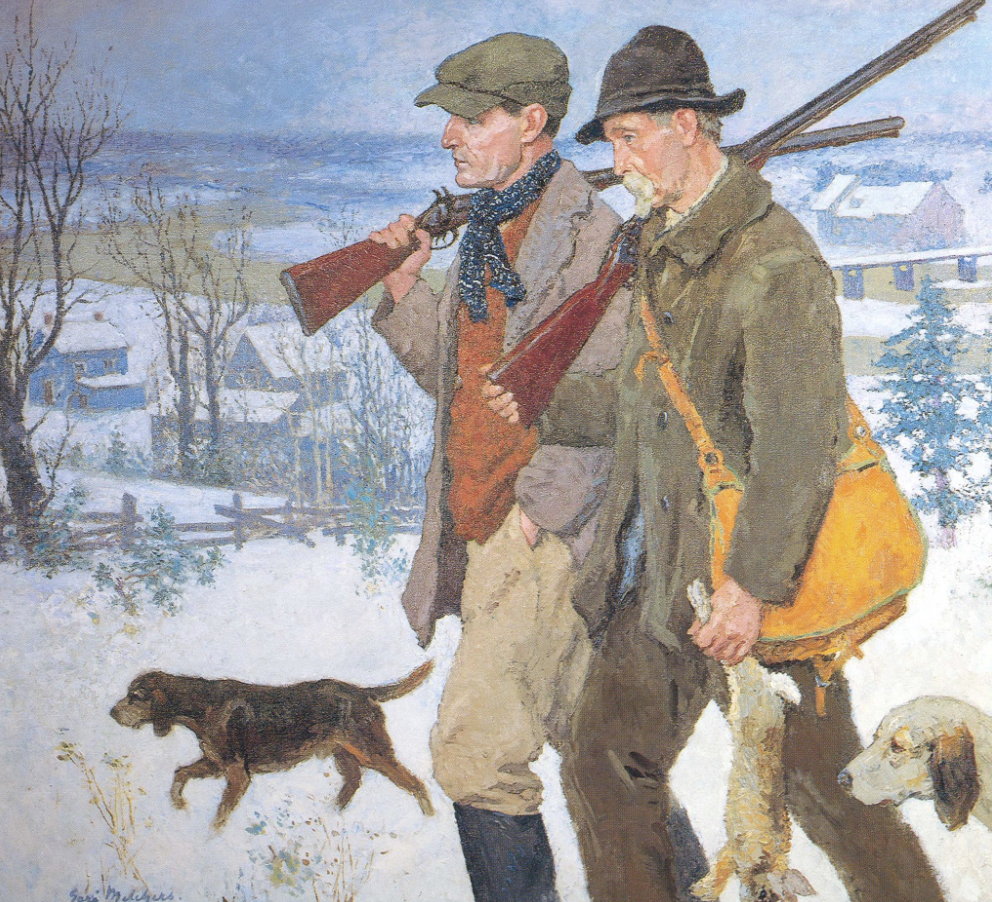

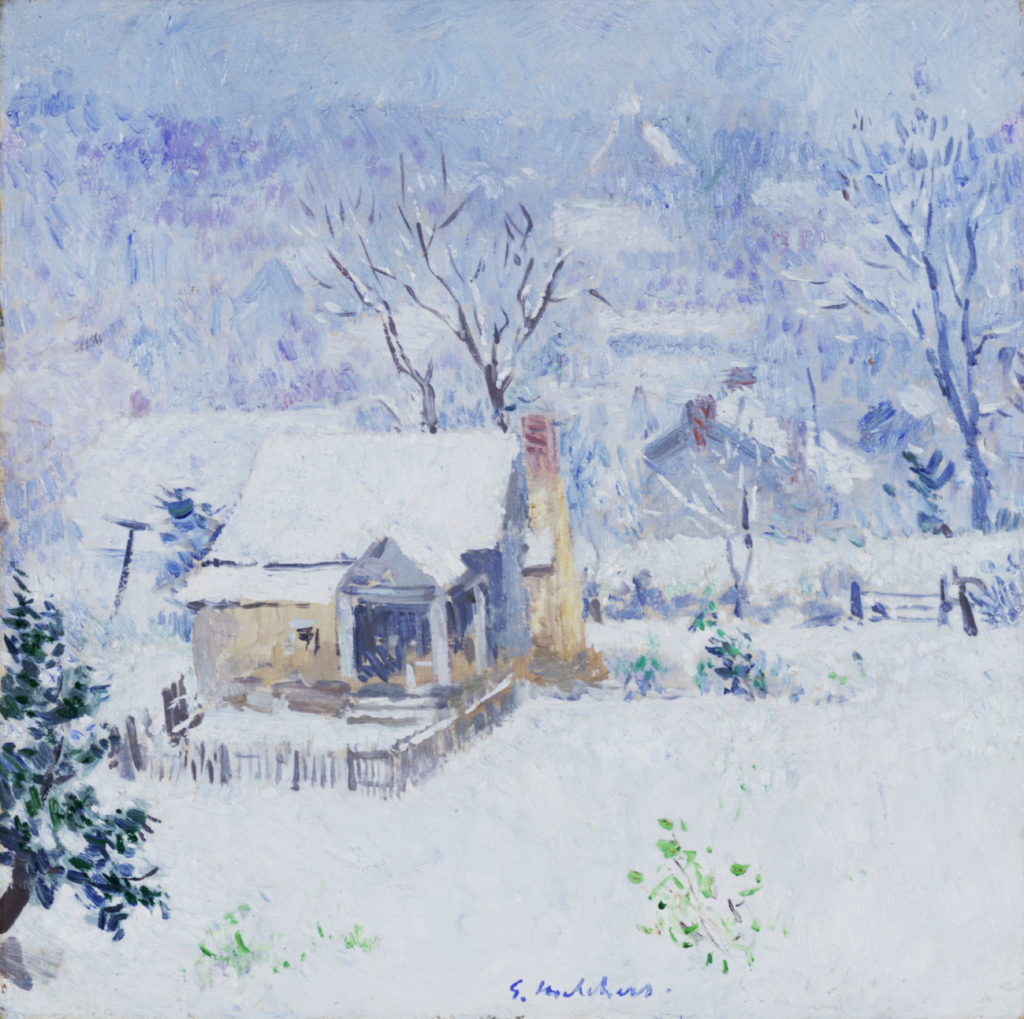
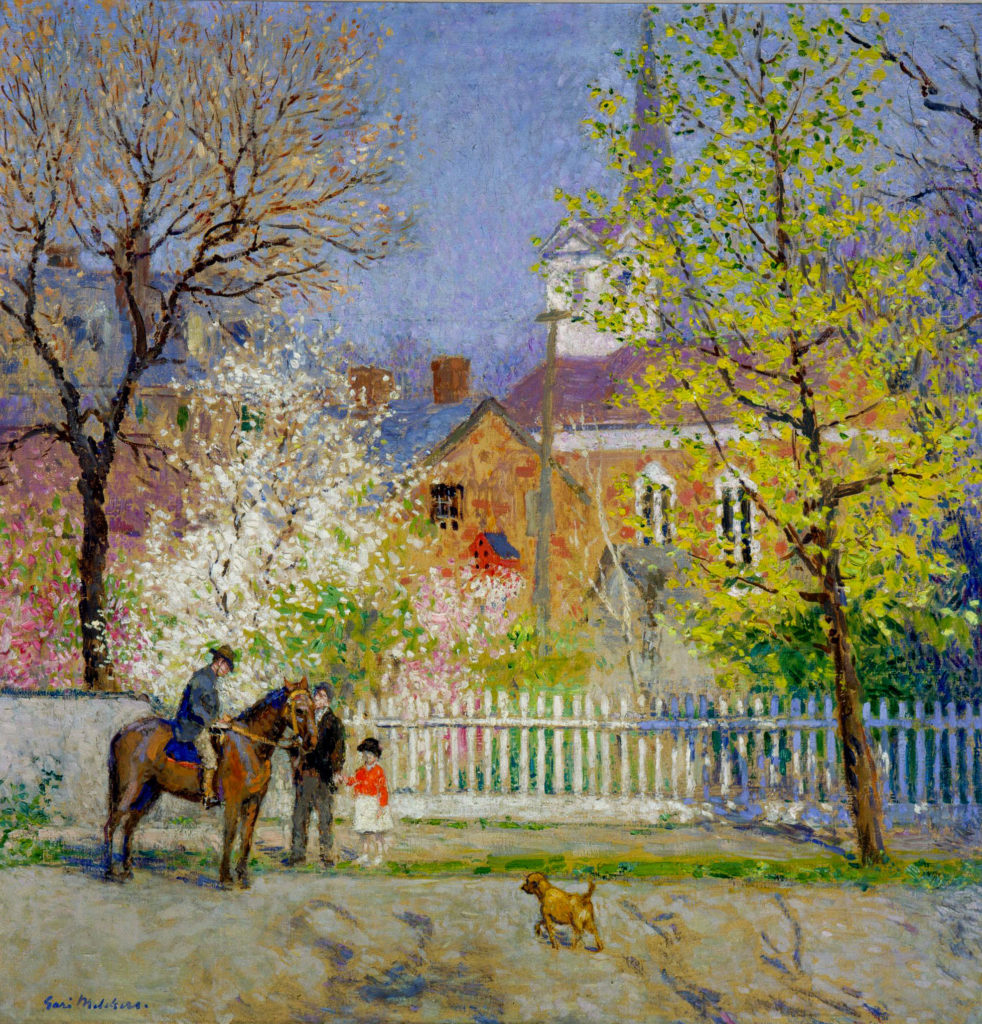
Despite his advancing years he was appointed Chairman of the Smithsonian Commission to Establish a National Gallery (the present-day Smithsonian American Art Museum) and he was appointed a trustee of the Corcoran Gallery of Art. Melchers and his wife helped found Virginia’s flagship art museum in Richmond, the Virginia Museum of Fine Arts. One of the galleries in the new 1936 building was named in his honor. As a member of the Virginia Art Commission, Melchers’ advice was invaluable in arranging for the creation and placing of the busts of Virginia-born presidents in the niches of the rotunda of the Capitol, and he guided a standardization of the state seal and the state flag.
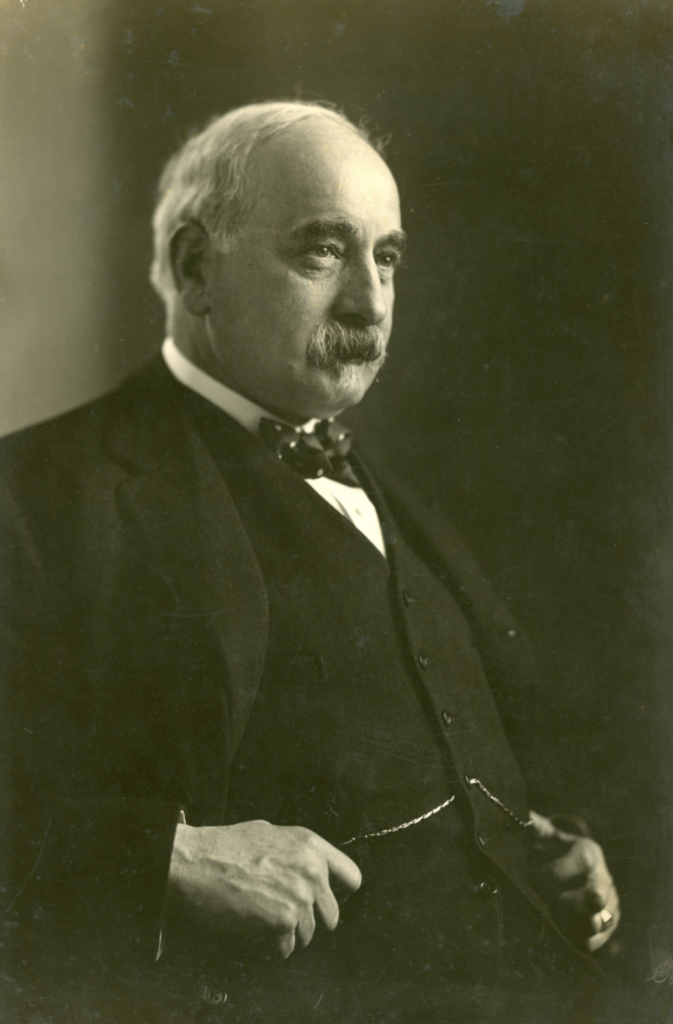
Gari Melchers died at Belmont in 1932, just as a major retrospective of his work opened to the public in New York. The show was well attended due to the high regard in which he was held by his contemporaries. Although Melchers was a cosmopolitan and spoke four languages, he was remembered as an affable man, generous in nature and beloved of his peers and those who lived among him wherever he resided. As to the promotion of his work, he was reserved and insisted that his art should speak for itself, but he was also an outspoken champion for the arts, artists, museums, and the City Beautiful movement. Melchers was a leading advocate of artists in need, often committing his own purse to the cause. He left $130,000 to New York’s Artists’ Fellowship. In recognition, the Fellowship instituted in 1945 the Gari Melchers Memorial Medal, awarded each year to a person or organization that has materially furthered the interests of the profession of the fine arts.

Who owns the rights to Gari Melchers’, The Nativity, 1891? I would love to use it on a book cover. Thank you for responding!
We own the rights to ‘The Nativity.’ Please contact curator Joanna Catron at jcatron@umw.edu or 540-654-1841 for information.
Reading that the artist and great man that he was, Melcher accompanied James Deering on a two month walking tour/trip through Italy and Switzerland where Deering picked up many ideas for his fantastic Vizcaya in Miami, Florida. What a life!
een replica/giclee ,bescheiden formaat van het Avondmaalstafereel in een dorpskerk zou ik graag in de museumshop zien verschijnen;het heeft de sobere eenvoud en stille oprechtheid van zgn ‘kleine luiden ‘.
Hello, did Garo have different signatures on his pieces? I have a beautiful scenic painting signed GARI. The handwriting seems the same as those I’ve seen. Thank you.
How much are his paintings worth